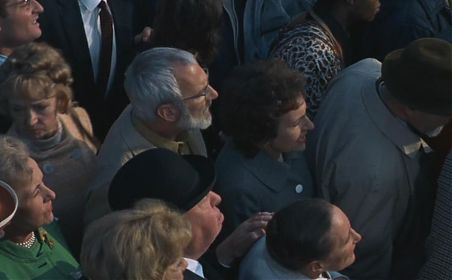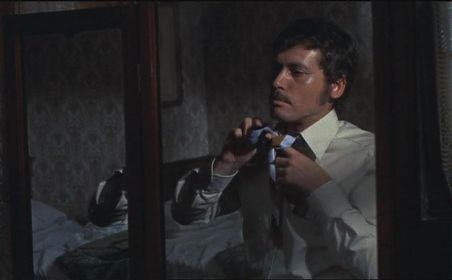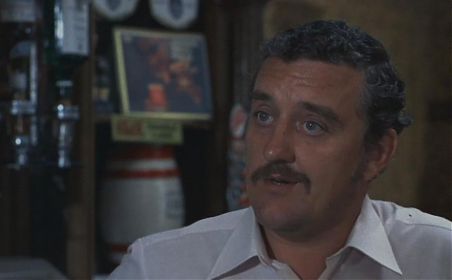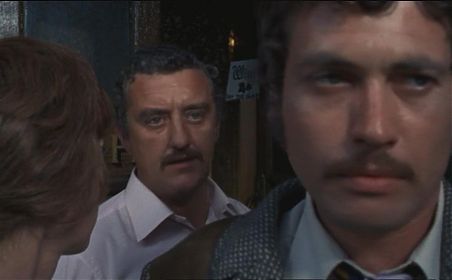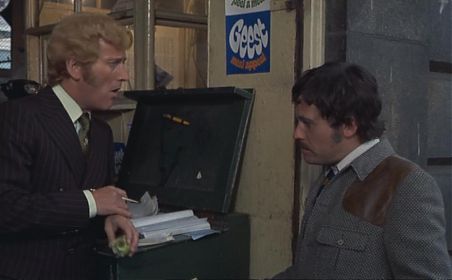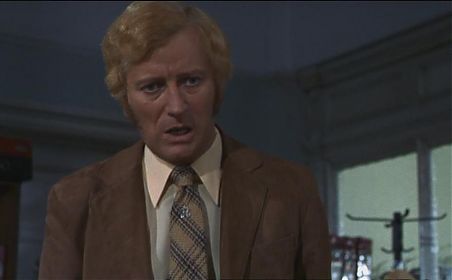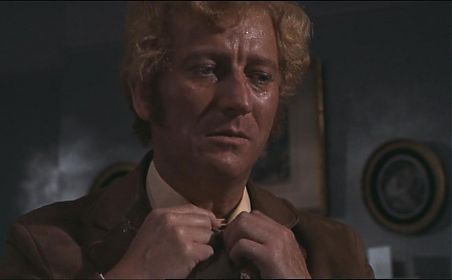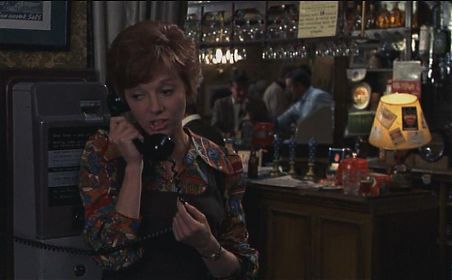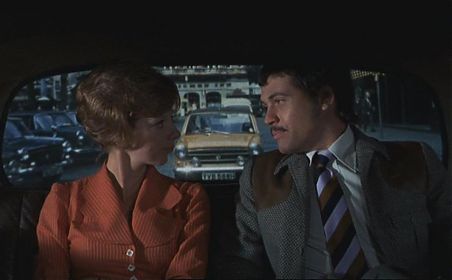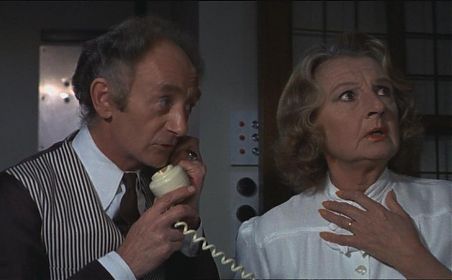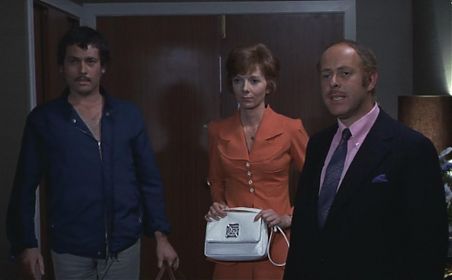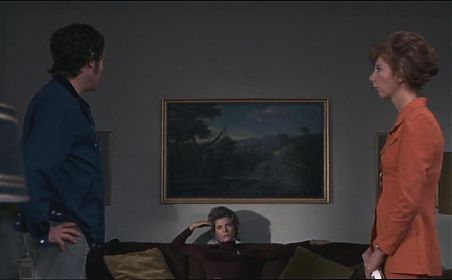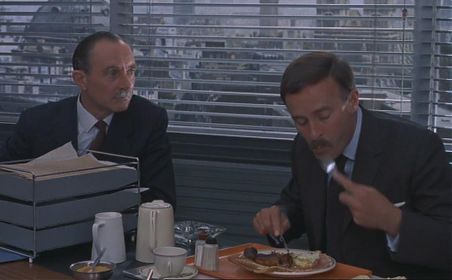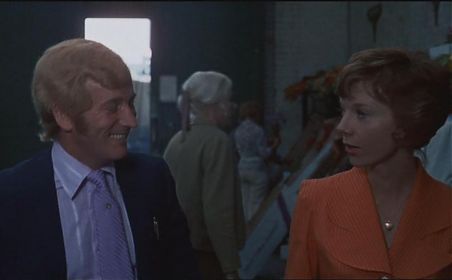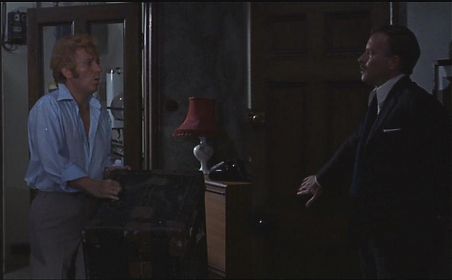Frenzy
Saturday May 16, 2009 in 70s cinema | alfred hitchcock
In 1972 Alfred Hitchcock returned to London to make his penultimate film Frenzy. After a few lacklustre years which produced the below average Torn Curtain and Topaz, this was his last great movie. A return to form, and a return to his best and most recurring theme, the wrong man. Hitchcock had been away in Hollywood for a long time, and Frenzy fondly went back to his roots for what I’ve always thought was a very accomplished swansong. Looking at it again, I believe that Frenzy is a true classic of British cinema.
In Frenzy Jon Finch plays Richard Blaney, our man wrongly accused of being the necktie murderer, a quaint term for what films would be calling serial killers two decades later. Despite the subject, Frenzy is at times quaint. The Covent Garden setting reveals a bygone time, both in the styles and locations of 70s London and in the fact that sometimes Hitchcock appears to treat his capital as if he has never left it, and that it hadn’t altered in the intervening years. Characters appear to talk in an almost 30s twang, interiors of cars have a suspiciously fake backdrop, truck drivers still whistle, people still say “pleased to meet you, I’m sure!” And so on. Hitchcock also however takes advantage of a more permissive age of cinema; there’s nudity, nastiness and swearing in this strange 30s/70s world.
Where in The 39 Steps Robert Donat ran across the British Isles with the police in hot pursuit, which involved train journeys, noisy flocks of sheep (and a memorable meeting with John Laurie’s stern crofter), Jon Finch in Frenzy is content to dash around the nooks and crannies of Covent Garden. This is a London film, through and through. And although most of it is filmed on location, there is the tell tale sign of carefully orchestrated extras carrying sacks of vegetables, and the sometimes obvious jump between outside and studio scenes. Visually, it’s London as Hitchcock wanted it.
Frenzy opens somewhat grandly, the camera sweeping majestically across London from a great height above. Seeing the film again, I was reminded of the magnificent crane shot in Young and Innocent, where the camera slowly moves across a ballroom, then towards the band playing and finally at the drummer and the drummer’s eyes; the drummer’s twitching eye revealing that this is our man. This is our murderer. As Frenzy opens with the camera flying past Tower Bridge it settles on a crowd at the riverside, who are about to discover a murder (“it’s another one of those necktie murders!” they excitedly cry). The film thus starts very quickly, no time for preamble and straight into an almost textbook murder plot. Although this turns out to be the manual of suspense films; it is the textbook.
With the idea of the necktie murderer firmly in the mind of the audience Hitchcock delivers the first of his many deft touches throughout this film. The scene quickly cuts to the first sight of Blaney as he is fastening his tie. Surely not – no? So soon we see the murderer? But this is a double bluff; we know, we really know, that this is not going to be our villain, and we sink into the comfort of the wrong man plot. Hitchcock further fleshes things out for us; Blaney is down on his luck, an ex squadron leader now working as a Covent Garden barman. He’s sacked by his landlord (a very nasty Bernard Cribbins) who accuses him of fingering the till. Blaney wanders into another pub, arguing with the barman as two respectable gents also walk in and discuss their thoughts on the “necktie murders”. Is this tipsy and aggressive man the villain? No, of course he isn’t. But we can see why he will get the blame.
Blaney runs into an acquaintance called Bob Rusk, a cockney wideboy played by Barry Foster. He is also on fairly amicable terms with his posh ex-wife Brenda, Barbara Leigh-Hunt, who runs a “marriage bureau” (common in 30s/70s London). He also has a girlfriend in the more down to earth Babs (Anna Massey). It’s all fairly jolly really, until Hitchcock does a really terrible thing. In a truly chilling, chilling, scene, Rusk is unmasked as the real necktie murderer and kills Brenda. Hitchcock doesn’t rely too much in the permissiveness of 70s cinema, he just uses his genius as a film maker in the same way he does in his other great murder movie Psycho. He also adds the uncomfortable air of the voyeur in a far superior, and far more disturbing way, than the similar (and much overrated) Peeping Tom. Studies of Hitchcock consider his voyeuristic fetish as a director. By 1972, I think his genius was on autopilot. Perhaps it is odd that he could by now be brilliant without even thinking about it.
As Rusk slips away from his crime, and we remember to take a breath, the scene is set for our first Great Hitchcock Moment. Brenda has been killed in her office; now her absent secretary inevitibly returns to find her. As she disappears inside the building the camera stops to watch from the outside. We realise, so used to film that we are, that it will be only a few moments before she goes upstairs, discovers the murder and we hear her scream. We wait, but it doesn’t happen. The camera stays where it is. We keep waiting. Hitchcock manages to delay the scream as long as possible, playing with our expectations. He only delivers the scream when he can’t stretch things out any more. Until we can’t hold our breath any longer. And then we breath again. He’s laughing at us; but we forgive him and we laugh with him.
Although going on the run with Blaney, Babs is obviously next in line for the necktie murderer (poor Anna Massey, only just getting over her role in, coincidentally, Peeping Tom ). After all, Babs is no Madeleine Carroll in the 39 Steps. And although Blaney checks them both into a hotel as a married couple (“Mr and Mrs Oscar Wilde”), he’s no Robert Donat either. They intend to sleep together and don’t need a pair of handcuffs to draw attention to their chastity; Hitchcock even allows himself a brief glimpse of a naked Babs. Perhaps, deep down, he has no respect for such a girl. Perhaps this is why Hitchcock seals her fate so soon after, although he does it with a piece of subtle genius that becomes our second Great Hitchcock Moment. As she steps out from Cribbins’ pub into a London street the sound around her is cut; just a short burst of total silence and a close up of her face. The next thing we hear is Rusk’s voice beside her and then the sound is revived; somehow we know she is doomed.
Throughout the film Hitchcock toys with sound. With his background in silent films he’s always done it, but it’s odd that after more than 40 years of sound he’s still fascinated by the use of, or lack of, sound in cinema. Paul Merton has discussed this probably much more articulartly in his recent documentary on Hitchcock. One example is where Rusk wrestles with Babs’s corpse in the back of a potato truck (he needs to recover some incriminating evidence). Where a lesser director would flood the scene with dramatic music, Hitchcock just uses the crunching and wheezing sound of the truck’s gears, even the noise of the spilling spuds. Later, when Blaney is in court, a glass door shuts and numbs the sound for us. We can see, but not hear, what is going on. The scene is just silent until a young PC, curious to hear what is happening, edges the door open for us.
Frenzy was adapted by Anthony Shaffer from Arthur La Bern’s novel Goodbye Piccadilly, Farewell Leicester Square. With such an impressive track record (including Sleuth and The Wicker Man), you may ask why Shaffer’s dialogue in this film is so ropey. Again, we go back to the 30s/70s dilemma and I think the antiquated script of this film is possibly deliberate in a, possibly misjudged, tribute to the director (although, for once, this may be a joke that Hitchcock wasn’t in on).
And as you might expect, there is some odd Hitchcock humour throughout. The mismatched couple briefly glimpsed at the marriage bureau are, again, straight out of 30s cinema. More successful is the camp hotel porter who gets the scoop of a lifetime (played by the great Jimmy Gardner), and most odd is the domestic scenes of Inspector Oxford (Alec McCowen) and his wife, played by Vivien Merchant, who dishes him up some awful examples of kitchen cuisine as he explains the details of the plot to her. It’s almost as if Hitchcock, forever bored with the tedium of dialogue, just has to give his characters something visual and amusing to do.
The supporting cast are very good. The nasty Cribbins, and – another recent friend of Doctor Who’s – the excellent Clive Swift add a further level of quality. Billie Whitelaw makes an appearance, and there’s also Michael Bates (from It Ain’t Half Hot Mum) and Jean Marsh (as the stuck up secretary). Oh yes, and a bowler hatted Alfred Hitchcock – making the last of his cameos in a crowd scene. Jon Finch (fresh from playing Polanski’s Macbeth and no doubt hot property at the time) is okay in the lead, although somewhat wooden. Barry Foster is brilliant as Rusk. This is a role that Michael Caine turned down, perhaps not wanting to do another dark character so soon after Get Carter. Caine may well have ruined it if he’d taken the part; there’s just a certain creepiness that Foster gets over rather well. But sadly, like Jon Finch, this was his last important role.
So I come away from Frenzy realising that is a forgotten gem. There’s a perfectly precise closing scene which, although probably daft if you analyse it, works brilliantly in the context of the film. Should you ever need it proved, this film is a reminder that Hitchcock was a fantastic film maker. As they might have said in 30s London, he was the salt of the earth – and they broke the mould when he was born.
Oh, and a final Great Hitchcock Moment, which is another favourite of Merton’s. I’ve mentioned the chilling scene where we see the horrible and explicit murder of Barbara Blaney. Even more chilling is the murder of Babs, where we don’t see anything. Hitchcock simply closes the door on her and pulls the camera away, down the stairs and away. We see nothing and hear nothing, not even a scream. But he makes it most unsettling because we want to see. I’m sorry, but we really do. We’re the voyeurs. Very unsettling indeed.
Comments [6]

